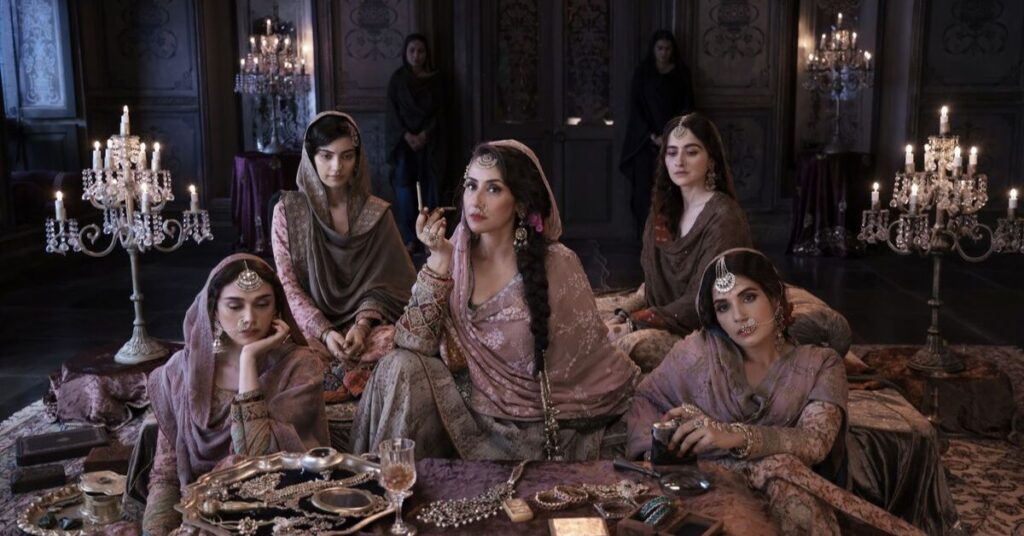- Netflix’s “Heeramandi: The Diamond Bazaar” brings attention to Lahore’s historic Heera Mandi neighborhood.
- The show, directed by Sanjay Leela Bhansali, depicts the lives of courtesans in pre-Partition India.
- While popular, the series has sparked mixed reactions from Heera Mandi residents.
An imaginative portrayal of the Indian subcontinent’s once-vibrant courtesan culture has become a hit on Netflix, drawing attention to a stigmatized neighborhood in Lahore, Pakistan’s second-biggest city. However, not all residents are pleased with the newfound attention.
“Heeramandi: The Diamond Bazaar,” directed by renowned Indian filmmaker Sanjay Leela Bhansali, captures the opulent lives of tawaifs, or courtesans, who entertain and seduce power brokers to aid in rebellion against British rule in pre-Partition India. Premiering in early May, Heeramandi was one of the top-viewed non-English shows worldwide for four consecutive weeks.
The series title refers to the Heera Mandi neighborhood in old Lahore, a cultural hub in Pakistan. Mixing history and fiction, Heeramandi showcases the glitz and glamor of the area, with its grand mansions that once housed dancing girls. However, today Heera Mandi is better known for its shoemakers, audio equipment rental stores, and its less savory aspects.
Khalid Mehmood, a 60-year-old resident who has run a music shop in Heera Mandi for 40 years, has seen the area evolve from a cultural center to a red light district. “Back in the day, all Pakistani musicians would come here to gain recognition,” he said. “Now my children don’t even visit because people don’t think it’s a good place.”
On a recent Saturday, some visitors on a tourist street near Heera Mandi said they came because they watched the show. Qasim Naveed, 18, whose family owns property in the area, said, “The whole series was good.” While some residents are happy about the attention, they acknowledge the show’s creative liberties.
Others fear that the renewed focus on Heera Mandi could be damaging. A 35-year-old resident, who wished to remain anonymous due to discrimination, said her teenage son avoids bringing friends home because of the area’s reputation. She worries about the stigma affecting their social lives.
Heera Mandi became a hub for music and dance during the Mughal era, with courtesans esteemed for their contributions to classical arts. Their prominence continued through Sikh rule and colonial times, although their status as artists declined. The area remained important for performing arts post-Partition but also became a focal point in the sex trade as dancers were pushed to the margins by rising conservatism under military dictator Zia ul-Haq.
Fouzia Saeed, who authored an ethnography on Heera Mandi, said police crackdowns during Zia’s rule dampened the performances, driving families away and leading to more underground activities. Long-time residents note that Heera Mandi has suffered similar neglect as other historic quarters of Lahore, which have steadily fallen into disrepair as the city’s population quadrupled over four decades.
Yousaf Salahuddin, whose family owns a sprawling haveli in Heera Mandi, witnessed the exodus of residents. “The place was getting smaller and more congested,” he said. “The new areas were built and this place was left to rot.”
Among those who left were former dancers and musicians like Noor Jehan, now memorialized with a plaque over her former home. Despite the show’s popularity, most fans are in India, unable to visit due to travel restrictions, instead celebrating online with dances, costumes, and drag shows inspired by the series.
Filmmaker and journalist Hasan Zaidi said Indian viewers have a keen interest in stories from Pakistan, relying on film and television to learn about each other. Later generations of Heera Mandi performers even learned to dance from Bollywood films.
Netflix announced a second season for Heeramandi, but some locals wish the lore of Heera Mandi would fade. Zerka Tahir, a social entrepreneur, said the area’s reputation has real-life consequences, marking children with stigma. “First we give them a bad name, and then we don’t let them escape it,” she said.

